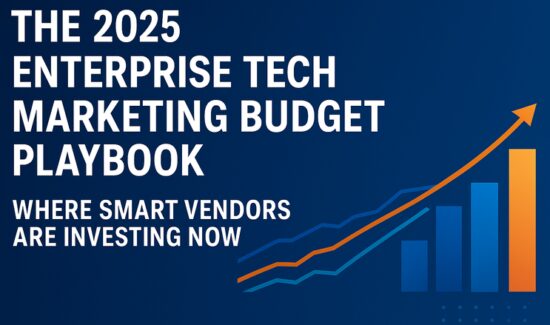Leverage Intent Data for Targeted Account-Based Strategies


As part of Solutions Review’s Contributed Content Series—a collection of articles written by industry thought leaders in maturing software categories—Josh Thomas, the SVP of Marketing at Madison Logic, explains the value of using intent data in your targeted account-based strategies.
In today’s highly competitive landscape, B2B marketers must constantly seek innovative strategies to stand out and connect with buyers. Traditional mass marketing approaches are no longer effective in capturing the attention and loyalty of potential customers. This is where account-based marketing (ABM) comes into play. ABM is a strategic approach focused on delivering personalized experiences tailored to individual accounts based on data, enabling marketers to build stronger relationships and drive targeted revenue growth.
A key tenet for successful ABM is data, which uncovers who to target, what content to use to engage them, and how well a campaign performs. When crafting an ABM strategy focused on reaching a specific industry, intent data is particularly useful for understanding when potential customers are actively looking for or interested in a solution. This valuable insight into target accounts enables marketers to tailor their marketing efforts and maximize their return on investment.
In this article, we will explore the power of intent data in ABM and how marketers can leverage it to drive success with their industry-specific approach.
The Role of Intent Data in ABM
Intent data is the crucial ingredient that helps marketers identify in-market accounts and understand buying committee personas. By analyzing intent signals, such as content consumption, downloads, and engagement, marketers can gain valuable insights into the accounts in specific industries actively researching and engaging with relevant content and messaging.
Buyers in different industries have different needs and concerns. When creating a personalized experience for a new target industry, intent data educates marketers on what will resonate with this audience the most. With a better understanding of their specific pain points and needs, marketers can tailor content and messaging to address these challenges so it speaks to buyer concerns at each stage of the funnel.
Intent data also allows marketers to monitor the effectiveness of their campaigns more accurately. Measurement and optimization are important with any campaign but a more critical practice when approaching a new industry. Marketers can determine optimization opportunities faster by measuring success based on real-time pipeline impact and make data-driven decisions that maximize their budget and improve campaign performance.
Why Intent Data Matters
Personalization has become a critical factor in the success of B2B marketing strategies as buyers increasingly expect brands to deliver personalized interactions. Research by McKinsey reveals that 71 percent of consumers expect personalized experiences, and 76 percent get frustrated when they don’t receive them. Intent data empowers marketers to meet these expectations and establish a deeper connection with potential customers. A data-driven, account-based approach can increase conversion rates by building awareness and trust by delivering tailored content and messaging at every stage of the sales cycle.
How to Leverage Intent Data for Targeted ABM Strategies
To leverage intent data effectively and deliver more targeted and personalized experiences to industry-specific audiences, marketers must follow these three best practices:
1) Identify and Prioritize the Right Accounts and Personas
According to Gartner, the typical buying group for a complex B2B solution involves six to 10 decision-makers. Here, data is critical to identifying in-market accounts and the individuals within these accounts actively researching and engaging with relevant content. By combining intent signals with a brand’s first-party customer data from their CRM and MAP, marketers significantly enhance their targeting efficiency by focusing on the accounts aiming to purchase a solution and influencing those involved in the decision-making process.
2) Personalize the Campaign Strategy at Every Stage of the Sales Cycle
Marketers should leverage intent data to choose industry-specific content and messaging that uniquely meets each buying committee member’s needs. This personalized approach allows them to balance brand-building and providing the information necessary for long-term revenue growth. A multi-channel ABM strategy ensures that a brand is present where potential customers spend the most time, helping to build awareness and capture opportunities to educate and inform their purchase decisions.
3) Optimize Campaign Performance in Real-Time
Data unlocks valuable insights into the buyer’s journey and engagement, providing a comprehensive understanding of campaign effectiveness. Marketers can leverage intent data to uncover the most effective channels, content, and advertising for each industry-specific account, enabling them to optimize their ABM strategy and drive more revenue. Marketers can make campaign optimizations that increase win rates through more relevant and personalized content by focusing on data points such as changes in pipeline volume and velocity.
Unlock the Power of Targeted ABM with Data
The most efficient way to maximize marketing investments and industry-specific campaign performance is to leverage more accurate and predictable intent data. By embracing the power of intent data and leveraging comprehensive intent data solutions, B2B marketers can unlock the full potential of their account-based marketing strategies and achieve concrete outcomes.




















